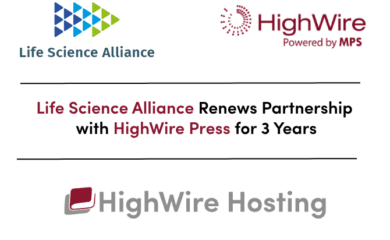Artificial Intelligence (AI) provides time and money saving opportunities to the scholarly community. Machine Learning (ML), Deep Learning (DL), and Natural Language Processing (NLP) technologies offer higher computational capabilities to speed up the publication time, reduce the production cost, and increase the reach of scholarly outputs. There are possibilities to explore human-robot collaboration within publishing workflow.
AI-based solutions include Scite.ai, a Brooklyn-based scholarly content recommendation service, Scholarcy, AI-powered article summarizer, SciScore, a methods review tool, Ripeta, a service that improves reproducibility of articles, UNSILO’s AI-based services such as content recommendation and manuscripts analysis, AJE/Research Square’s digital services such as automatic editing and translation, and Crossref’s Similarity Check and Turnitin’s plagiarism detection service. These and many others are contributing to the enhancement of the scholarly publishing landscape.
AI is used by researchers for text and data mining, and by publishers for automating various elements of the publishing workflow. Certain tasks, such as curation, image checking, plagiarism checks, statistical review, and reviewer suggestion, may be sped up by integrating AI or ML technologies. While AI can cut down on manual intervention in some areas, it is not without potential for bias or error. For this reason, publishers are careful about which elements of workflow they supplement with these tools, and how they build in safeguards to ensure they aren’t trading quality standards for increased speed or lower cost.
AI and ML technologies are evolving. This means that keeping up with constantly changing capabilities can be challenging. At the same time, the efficiencies these technologies represent justify the time spent learning about them.
Let’s find out how AI could disrupt or bolster the scholarly publishing industry.
Role of Artificial Intelligence in Publishing Industry
Research begins with initial discovery. Researchers scour their sources across the web, these journals and articles are indeed the endpoints of others’ research. Publishers are charged with supporting the end-to-end journey every time. From pre-publication to post-publication, AI can offer solutions to accelerate the associated tasks, and can help increase the reach of published manuscripts.
Today AI is capable of assembling non-fiction reports autonomously, and yet it is still extremely vulnerable to all kinds of bias, and thus not trusted to reliably accomplish this task without human verification. While it can mimic tone and draft content with an emotional arc, parsing appropriate context, and other nuances of science writing make AI unlikely to replace researchers themselves. Just as self-driving cars aren’t fully trusted due to uncertainty and massive risk around autopilot and malfunction, research can’t rely 100 percent on AI to interrogate or communicate science and discovery directly. Consequently, humans remain necessary to supervise AI performance.
Still, there are opportunities to ‘feed’ AI tools with enough quality input and rules to guide the creation of useful and minimal-risk outputs. There are successful AI tools that create abstracts and plain language summaries, and AI can manage the curation of content suggestions from on top of a large body of scholarly research content.
Let’s explore the usages and needs of AI/ML technologies in various stages of the publication process.
Text mining and automated reporting
Text-mining and data-extraction technologies now rival manual curation of scientific publications. Technology-based solutions help researchers sift through millions of articles and extract relevant information. For example, Meta.org, a once promising science research discovery tool, provides real-time updates on biomedicine-related research. The Chan Zuckerberg Initiative (CZI) acquired Meta in 2017, but recently announced that Meta will be shut down. Should we expect others to fill the vacancy left by this development? This is of particular interest to publishers who showed initial interest in Meta’s goal of leveraging AI to surface open discussions and online attention of global biomedical researchers, journals, papers, diseases, techniques, questions, and much more.
NLP also handles the complex information extraction (IE) and text summarization tasks, such as the creation of abstracts and plain language summaries, social media text, and other short formats for promoting research. Iris.ai is one of the data extraction tools that extract key data from voluminous data into a tabular format, like MS Excel sheet. Using AI/ML for these purposes can significantly cut associated costs via reducing staff time and errors. This means that editorial staff can then refocus effort on adding greater value to the content, or increasing volume.
Editorial workflow
AI and NLP technology simplify processes like content formatting, text auto-tagging, language checks, plagiarism checks, image quality checks, as well as identifying potential copyright infringement. As editing is often the most time-consuming process, the technology can automatically correct, make changes, and flag complex issues requiring an editor’s attention, which means that the editor can spend time improving the quality of the work.
Predictive analytics
Artificial Neural Networks (ANN) can be trained with extensive data that make tools capable of suggesting trends and discovering the hidden connections via deep learning and content analysis (not only across text assets but also audio and video). With AI, publishers can get real-time trending topics, catchy titles, and imagery, as well as track strategic insights of all time while saving time and money. They can assess manuscripts and leverage efficiencies via ‘decision assist’ tools that can be configured to surface specific attributes within a manuscript, the images, or the associated metadata.
For example, Wizdom.ai, which supports PubMed, Taylor & Francis, ArXiv and several others, offers research trends, current insights, and in-depth analytics to aid in exploring the rapidly evolving research landscape.
Format transformation
AI can outperform humans in production tasks that require a lot of manual effort. AI can reproduce itself and improve its quality of work besides automating and speeding up the tasks. For example, they can convert any digital book into human-like audio that can be downloaded as MP3. Also, the NLP algorithm can automatically create video summaries of text articles in just a few steps.
Language translation
NLP refers to understanding human language. Learning through experiences, NLP helps computers to read, understand and interpret the text in diverse languages. Some publishers have deployed AI-powered language translators to have time-saving benefits. For example, Springer Nature offers a free auto-translation service that uses DeepL Translator, and AJE has an AI-based Standard Translation service that translates journal articles, grant proposals, and other academic works into English. The technology helps to increase the exposure of scholarly outputs and may also support scientists, students, and readers with English as a Foreign Language (EFL).
Content personalization
Deep learning models have led publishers to offer customized services to individual readers or groups of readers. Technology offers tailored content suggestions to consumers of research by analyzing their queries, interests, and behavior. It turns out that this is an intelligent marketing strategy to retain readers and enable insights useful to subscription renewal, institutional agreement negotiation, and overall impact.
Chatbots and customer service
Publishers may deploy conversational AI for personalized interaction with submitting authors or with readers. Chatbots offer efficient ‘always on’ customer engagement, as well as powerful human behavior tracking capable of identifying specific requirements and collecting insights needed to help human teams resolve issues faster. This is made possible by deep learning machines that store and process data in ANNs.
Administration and accounting
AI and ML can represent lower-cost administration of back-office tasks such as estimating, invoicing, collecting, and reporting on publishing fees to authors and institutional partners. Compared to leveraging staff – especially staff who do not specialize in these areas – automated options can be prompt and accurate. Some examples of automating these tasks are visible in the ChronosHub article processing charges management offering, as well as other similar tools in that space.
Business benefits of Artificial Intelligence
There are many reasons why AI/ML is in great demand for both current and new business practices to make better-informed strategic decisions. An investment in AI may benefit departments like marketing (78%), distribution (67%), editorial (63%), production (43%), administration (32%), and press (29%) besides sales and marketing, analytics, chatbots, and content production.
By taking an informed and thoughtful approach to implementing AI/ML technology, publishers may be able to grow their customer base, sustain their position in the market, and increase revenue over a period of time.
While there’s a belief that artificial intelligence is central to the next stage in human evolution, at the very least it seems like it is a new, potentially disruptive technology trend that will persist in the near future. Many advances in robotics have been made, yet realization of a fully developed AI or so-called Artificial General Intelligence (AGI) remains at some point in the far-off future.
In what ways do you find AI contributing to the scholarly publishing industry? Share your thoughts here, or set a time to chat with our team of experts.



